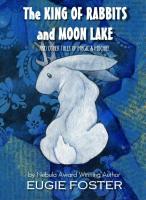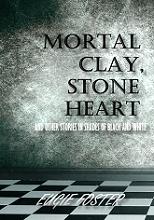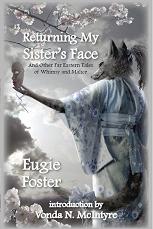Busy with the writing, but here’s a picture fosteronfilm found online that made me giggle:


Writing Stuff
Received:
– Payment from Pseudopod for “Wanting to Want.”
– Galley proofs for “Body and Soul Art” from the ASIM Best of Horror anthology.
Published:
– The anthology Bash Down the Door and Slice Open the Badguy with “Mistress Fortune Favors the Unlucky” is now out! I’ve been looking forward to this one for a while. I anticipate many belly laughs and chuckles. Will commence staking out the mailbox for my contrib. copy . . .
New Words:
– 900 on the Fox Princess novel. And it’s a mini-milestone; I’m past “short story” length!
I’ve noticed myself doing something anomalous, writing-wise, with this novel. I’m putting down the dialogue and using it as a sort of place holder, skimming over scene, setting, and action with the intention of going back to fill those in later. I’ve never done this before.
It keeps the story moving, both in my head and on the page, but it makes for a somewhat Spartan and dialogue-heavy initial draft. I suspect that may change in my next chapter, which will involve far more action than the previous ones, which were indeed a lot of talk-talk scenes.
Makes me think, though. I’ve been asked before about my writing “style,” whether I outline, how much research I do, if I write chronologically, etc. And the more I write, the more I’m certain that I don’t have a set method, per se. I put words on the page in whatever manner I can get them down.
Are other writers more structured than I am?
|
|
|
8,455 / 40,000
(21.1%) |









That picture just made me laugh. Thanks for sharing.
“Hurry, before the sheepdog gets here!”
Hee! Leapfrogging wolf. Or should that be “sheepfrogging”? “Leapsheeping”?
That makes me feel better, because that’s how I’ve been getting out the words on my novel. I don’t have an outline, though I know most of the major plot points, including the ending. I’ve been writing more sparsely than usual–very little scene setting, just dialogue and some action, intending to go in and pad it out once I know where it’s all going. I’m still finding the characters too, so that will have an affect on the dialogue.
I’ve been taking notes for ideas I want to include later, and things I need to add or revise in what’s already written (but I’m not going back to work on those until I reach the end). The plot is fairly linear and there’s only one POV character, so I suspect the more complicated the project, the more organization and planning you would need. I think however you can get the words out is fine–there’s usually more than one way to approach writing, and I think it changes with the demands of the story as much as it might from one writer to another.
How are you keeping notes, characters, details, etc. straight (if you are)? I’ve just been charting them in a separate document. I’ve also been writing each chapter in a separate file, usually with a text file to accompany it with some other notes that I’ve discarded or want to incorporate at some point. Just figuring it all out as I go.
“How are you keeping notes, characters, details, etc. straight (if you are)? I’ve just been charting them in a separate document. I’ve also been writing each chapter in a separate file“
I did a lot more preparatory research than I usually do before launching into this WiP. I’ve got my notes in separate documents sorted by subject. I also created a fairly detailed outline and character sketches before I launched into writing, something I don’t usually do either, with a separate document for the outline, character sketches, and the actual manuscript. And to keep my documents from getting too messy, I created hyperlinks from my outline and character sketches to the relevant research files. As I come up with ideas that I want to incorporate, I’ve been jotting them down in appropriate spots in the outline, or if they’re relatively imminent, a few hard returns down the page to help me remember them (which is pretty common for me to do).
I’m hoping that my extra pre-writing efforts will help keep me on track, as flying by the seat of my pants hasn’t worked out on the novel front for me. Honestly, I’m in pretty deep trial-and-error mode (mostly error) here, as I haven’t been able to complete a full-length work yet. Much performance anxiety here.
I intended to do some of that pre-work for this project, because I usually skip the character outlining and such, but I realized that I was using it as an excuse for why I wasn’t “ready” to start on the novel. My short stories are usually pretty organic, so I decided to try the seat of the pants thing for the longer work too and work it out as I go. So far so good. I’m trying not to think about how messy and flawed much of it is until I have something to fix. I’ll make it pretty later, or try to. 🙂 Being public about my progress keeps me going too, despite the performance anxiety. Quitting in those moments of doubt would make me feel more like a failure, so it’s best to soldier on through the rough patches and face whatever I end up with when I get there. Good luck!
Hee, love that photo! 🙂
And rock on with the wordage. However you get them on there, it’s all good. Well, except if you’re just bashing your head up and down on the keyboard.
“Well, except if you’re just bashing your head up and down on the keyboard.“
Y’know, there are days when it feels like I’d get better results with that technique . . .
Cool on wordage! I just broke 11 K on the alchemy book. No, no outlines or anything, just a vague notions of bits of plot and characters. I occasionally do placeholder scenes, but generally just muscle through — one needs faith that it’ll work out in the end, one way or another.
Hurray on progress! Among my favorite and oft quoted lines from Shakespeare in Love:
“Strangely enough, it all turns out well.”
“How?”
“I don’t know. It’s a mystery.”
That just sums up the creative process so well . . .
I don’t know about “more structured,” but certainly “differently structured.”
I can’t delve into anything longer than a tiny short story without outlining first. And the notion of skipping around the way you’re talking about makes me cringe. (Not saying that it makes for bad writing; just that I certainly couldn’t do it.) The closest I come is that, if a cool line of dialogue or a nifty piece of description comes to me, I’ll jot it down somewhere for use later in the project.
(The above bit, about not skipping around, applies primarily to fiction work. RPG work, by necessity, involves more jumping back and forth. But even there, I prefer to minimize it where possible.)
Me, once I’m through with outlining and any necessary research, I want to start at the beginning, work through to the end, and stop. I want my rough draft to be as close as I can possibly make it to the final draft. So I guess, at least in that sense, yeah, I’m heavily structured.
Nope, that definitely counts as “more structured.” Lots more!
For my short stories, I typically start from the beginning and work through to the end–although there have been exceptions–but the only other long work I completed, my middle grade novel, there was much jumping around and going back to fill in the middles.
So far, this project has been my most structured effort with its detailed outline and gobs of preliminary research, believe it or not! Typically, when I do research, it’s ad hoc; I realize upon describing a character that I don’t actually know what sort of shoes they wore in Ancient Korea and I commence hunting down the info. there and then. I’m hoping that the greater structure will be conducive to plowing through the middle boggyness that has always been my bane.
Well, okay, I do sometimes do the “stop writing and reasearch furiously to get the answer to an (often minor) question.” 🙂 But I consider that less “jumping around” and more of just an interruption to the flow.
I’m curious about something else, come to think of it. What’s the cut-off you’re using to define the differences between “short story,” “novella,” and “novel”? I’ve always been told that it’s not a novel until it hits at least 70K, and preferably a bit higher.
I’m using the SFWA’s official Nebula Award categories (the same word counts are also used for the Hugo Awards):
Novel — 40,000 words or more
Novella — 17,500–39,999 words
Novelette — 7,500–17,499 words
Short Story — 7,499 words or fewer
Also, YA novel lengths start at around 40K, hence my current goal.
Okay, good to know. Thanks. 🙂
Structured? Outlines? What’s that? I mostly write chronologically, but even then I sometimes jump back a few pages to add in a phrase or paragraph that just popped up in my head to fill up areas I skipped. and I have a bad habit of getting so action-and-diologue-centric that when I get critiques in, the first question I usually get is “Where’s the scene descriptions?”
Scenes? Oh dear! I forgot, I forgot….
“Novel — 40,000 words or more”
40,000? Not 50,000? Oh no! My novella IS a novel! Waaaaaaaaaaah!!!!!